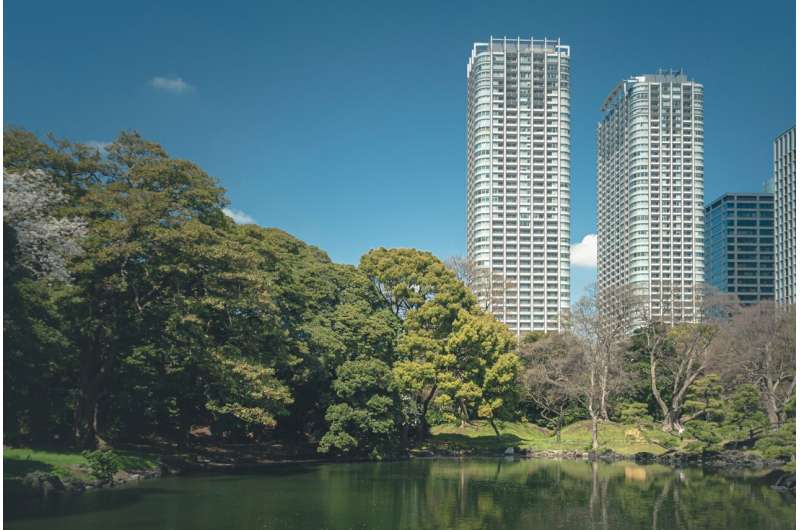Urban environments with more vegetation are associated with better health behaviors in children

Urban areas with more vegetation, higher density of buildings and facilities, lower population density and without major roads are associated with better health behaviors in children. This is the conclusion of a multicohort study published in Environment International and led by the Barcelona Institute for Global Health (ISGlobal), a center supported by the "la Caixa" Foundation. Specifically, the study found that children who live surrounded by more natural spaces are more physically active, spend less time doing sedentary activities, get more hours of sleep and are more likely to walk or cycle to school.
Most studies conducted to date have focused on the effect of the urban environment on adults and considered only a single type of exposure, without relating it to other factors. This new study goes a step further by assessing the association between a wide range of urban environmental characteristics and healthy habits in 1,581 children aged 6 to 11 years from six European cohorts. The study reflects the growing interest in investigating how the urban environment contributes to unhealthy behaviors in children and whether a change in urban design could help to promote healthier lifestyles.
To perform the analysis, the researchers estimated exposure to 32 characteristics of the urban environment near the children's homes and schools, including traffic density on the nearest road and the presence of green spaces or blue spaces (beaches, rivers, lakes, etc.). They also collected information on the children's healthy habits, including the total amount of time spent doing moderate-to-vigorous physical activity, physical activity outside of school hours, active transport (walking, cycling, etc.) and sedentary activities, as well as sleep duration. A multiple-exposure model was developed using these data.
Urban design influences health
The study found that active transport increased and time spent doing sedentary activities decreased in places where children were exposed to more green space. It also found that proximity to a major road was associated with shorter sleep duration (4.80 fewer minutes per night, on average).
"Our findings have implications for urban planning policies," commented Martine Vrijheid, head of ISGlobal's Childhood and Environment program and last author of the study. "Public health interventions tend to focus on influencing individual behaviors rather than tackling the broader system determinants that drive these behaviors and widen health inequalities. Our evidence reinforces the need to prioritize urban design to improve health-promoting behaviors in children and prevent ill health in adults." One such strategy should be to increase the number of green spaces and the amount of vegetation in the streets.
Vrijheid added: "We need further research that includes other urban indicators that may be relevant for the behavior of children and adolescents, such as pedestrian zones and sport facilities (for example, ping-pong tables, volleyball courts, etc.), and which looks at more countries and less-studied areas in order to better assess how changes in the urban environment affect people's lifestyles."
A large percentage of the children included in the study (63.6%) did not meet the current recommendation of the World Health Organization (WHO) for moderate-to-vigorous physical activity (at least 60 minutes per day) and 58.6% spent more than two hours per day watching television or playing computer or video games. In addition, active transport was low, with children spending an average of 6.9 minutes per day traveling from home to school.
Cohorts studied
The study, based on the collaborative Human Early-Life Exposome (HELIX) project, used data from six European birth cohorts:
- Born in Bradford (BiB, United Kingdom)
- Étude des Déterminants pré et postnatals précoces du développement et de la santé de l'Enfant (EDEN, France)
- INfancia y Medio Ambiente (INMA, Spain)
- Kaunas cohort (KANC, Lithuania)
- Norwegian Mother, Father and Child Cohort Study (MoBa, Norway)
- Mother-Child Cohort in Crete, (RHEA, Greece)
More information: Sílvia Fernández-Barrés et al, Urban environment and health behaviours in children from six European countries, Environment International (2022). DOI: 10.1016/j.envint.2022.107319
Journal information: Environment International
Provided by Barcelona Institute for Global Health




















